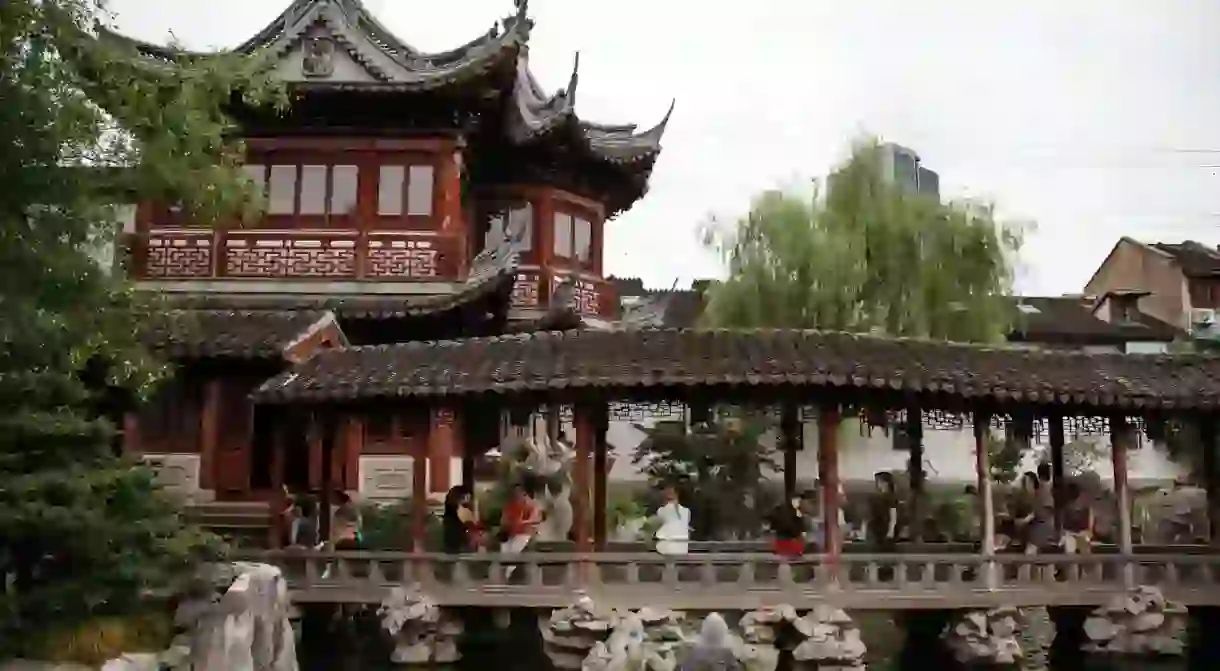7 Things You Didn't Know About the Yu Garden of Shanghai

One of the most popular tourist sites in Shanghai is, without fail, the Yu Gardens (Yuyuan, 豫园). This classic Chinese garden in the Old City was created as a space for melding poetry and landscape. Here are some interesting tidbits for those visiting the two hectares of rambling pathways, hidden pavilions and ancient flora.
It was built by a son for his parents
Pan Yunduan (潘允端) was a Ming-era governor of Sichuan Province who served his famous minister father Pan En (潘恩). Pan Yunduan decided to build the Yu Gardens (which means Garden of Peace and Comfort) in 1559 for his parents to enjoy in their old age to show filial piety and to make their old age as pleasant a one as possible. No scholarly slouch, he designed each pavilion and courtyard to be named after pieces from poetry and made each detail important. Unfortunately, this extreme perfectionism led to 18 years of construction. By 1577, the Pan family was essentially bankrupt. By the beginning of the Qing Dynasty, the gardens had fallen into disrepair, until it was restored and expanded by a series of rich merchants.

It’s a no-go zone for evil spirits
Just outside the entrance of the garden is a manmade lake, atop which the beautiful Huxinting teahouse appears to float. Built in 1784, the striking building is considered one of the oldest restaurants in Shanghai, and is a great place to stop in for a spot of tea – the space is famous for hosting foreign dignitaries including the Queen of England. It is also purportedly built without using a single nail. However, to get there, one must cross a bridge that zig and zags in an inefficient manner across the water. This is not only for aesthetic appeal. According to Chinese myth, the hard angles of the design are an important way to keep evil spirits from getting through the doors, as they are believed not to be able to turn corners.

It was once a rebel hideaway
One of the most famous buildings in the Yu Garden is the Hall of Heralding Spring (Dian Chun Tang, 点春堂). This is where the secret Small Sword Society (Xiaodao Hui, 小刀会) plotted to join the Taiping Rebellion based in Nanjing, which aimed to overthrow the Qing Dynasty. In 1853, the Small Sword Society staged an armed uprising in the city against corrupt officials and excessive taxation, captured the walled city of Shanghai and ruled there for a year. As the rebellion spread, Qing loyalists and foreigners based in the city assembled a joint force team and together, they defeated the Small Sword Society. The imperial troops then spent three days looting the gardens and city section, almost entirely destroying the eastern half of the city with fire. Any remaining rebels who did not evacuate were captured and executed on the spot. Today, there is a small collection of uprising artifacts in the Hall of Heralding Spring, including weapons and coins minted by the rebels.
The Grand Rockery is a sight to behold
In the first section of the garden, you come upon the loftily named Grand Rockery (Dajia Shan, 大假山), a 12 meter (39 feet)-high formation made of 2,000 tons of rare yellow stones brought all the way from Wukang in Zhejiang Province. Each rock was fused to the other using a combination of rice glue and limestone to create a formation that essentially evokes a mini landscape of cliffs, winding paths and gorges – purportedly designed by famous garden artist of the Ming Dynasty, Zhang Nanyang. Before being titled the Grand Rockery, the pavilion perched on top was known as “The Pavilion for Viewing.” At one time, it was the tallest structure in Shanghai, with a clear view of the Huangpu River. Today, the city’s many high rises dwarf it in comparison.

It’s changed from towers to rubble – and back again
It may have taken Pan Yunduan 18 years to complete his ambitious garden, but it took only minutes to destroy it – again, and again. The Taiping Rebellion wasn’t the only time the Yu Gardens were touched by conflict. During the Opium War of 1842, the gardens sustained heavy bombardment, and the British army took over the garden and used the Huxinting teahouse as a base of operations. After the destruction followed by the Small Sword Society rebellion, the whole of the grounds were essentially ruined. The gardens were once again rebuilt and renovated by the Shanghai government between 1956 and 1961, but were once more damaged during the catastrophic Cultural Revolution. Today, the tumultuous past has faded into history, but scars can still be seen, and very little of the old city and Yu Gardens is the original iteration.
There are dragons overhead
The entire Yu Garden compound consists of more than 30 halls and is divided into six regions by tall white walls. Each region is separated by “dragon walls;” iconic rolling gray-tiled ridges of scales ending with an ornate dragons head. The dragon wall surrounding the third region of the gardens is the most stunning. Titled “Dragon crossing the clouds,” the serpentine tiling and ornate skull and claws are incredibly well done. What’s even more interesting is the small toad tucked beneath the dragon’s chin – an unusual and whimsical detail. In Chinese mythology, the dragon often represent auspicious power and luck, while a toad represents longevity. Together, the two animals make a formidable pair.

It's home to a very special kind of stone
Park














